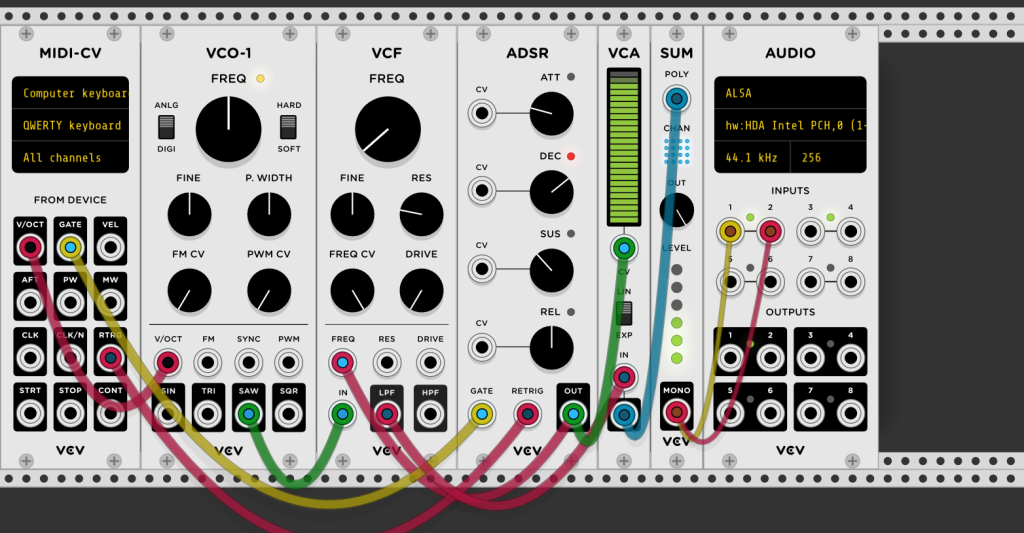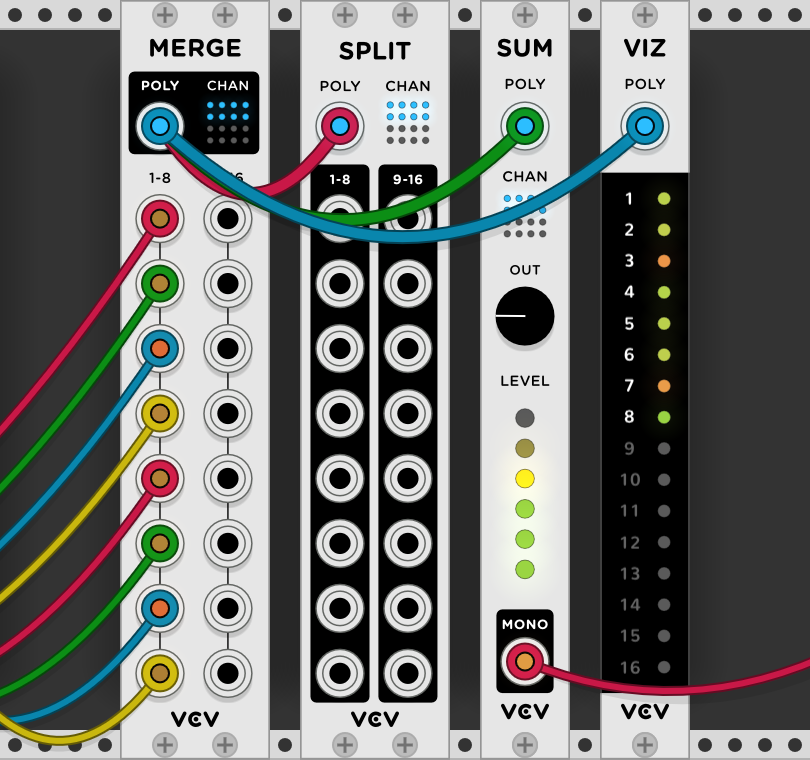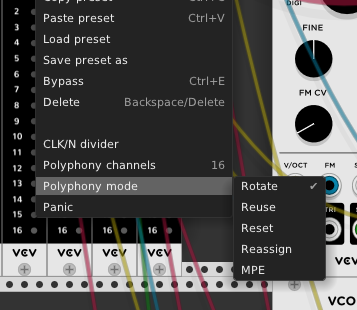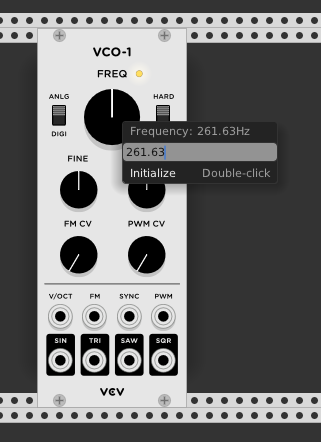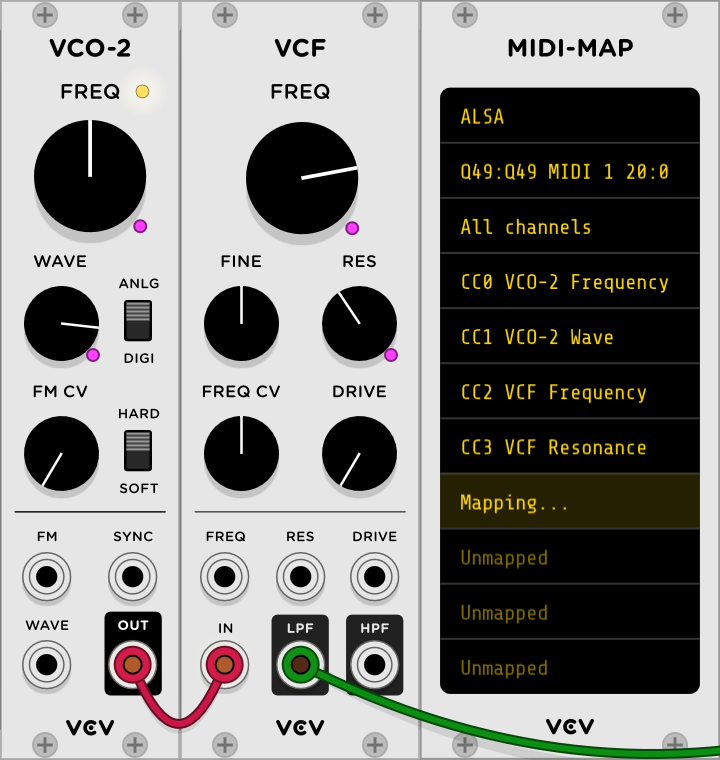VCV Rack, the open source platform for software modular, keeps blossoming. If what you were waiting for was more maturity and stability and integration, the current pipeline looks promising. Here’s a breakdown.
Even with other software modulars on the scene, Rack stands out. Its model is unique – build a free, open source platform, and then build the business on adding commercial modules, supporting both the platform maker (VCV) and third parties (the module makers). That has opened up some new possibilities: a mixed module ecosystem of free and paid stuff, support for ports of open source hardware to software (Music Thing Modular, Mutable Instruments), robust Linux support (which other Eurorack-emulation tools currently lack), and a particular community ethos.
Of course, the trade-off with Rack 0.xx is that the software has been fairly experimental. Versions 1.0 and 2.0 are now in the pipeline, though, and they promise a more refined interface, greater performance, a more stable roadmap, and more integration with conventional DAWs.
New for end users
VCV founder and lead developer Andrew Belt has been teasing out what’s coming in 1.0 (and 2.0) online.
Here’s an overview:
- Polyphony, polyphonic cables, polyphonic MIDI support and MPE
- Multithreading and hardware acceleration
- Tooltips, manual data entry, and right-click menus to more information on modules
- Virtual CV to MIDI and direct MIDI mapping
- 2.0 version coming with fully-integrated DAW plug-in
More on that:
Polyphony and polyphonic cables. The big one – you can now use polyphonic modules and even polyphonic patching. Here’s an explanation:
https://community.vcvrack.com/t/how-polyphonic-cables-will-work-in-rack-v1/
New modules will help you manage this.
Polyphonic MIDI and MPE. Yep, native MPE support. We’ve seen this in some competing platforms, so great to see here.
Multithreading. Rack will now use multiple cores on your CPU more efficiently. There’s also a new DSP framework that adds CPU acceleration (which helps efficiency for polyphony, for example). (See the developer section below.)
Oversampling for better audio quality. Users can set higher settings in the engine to reduce aliasing.
Tooltips and manual value entry. Get more feedback from the UI and precise control. You can also right-click to open other stuff – links to developer’s website, manual (yes!), source code (for those that have it readily available), or factory presets.
Core CV-MIDI. Send virtual CV to outboard gear as MIDI CC, gate, note data. This also integrates with the new polyphonic features. But even better –
Map MIDI directly. The MIDI map module lets you map parameters without having to patch through another module. A lot of software has been pretty literal with the modular metaphor, so this is a welcome change.
And that’s just what’s been announced. 1.0 is imminent, in the coming months, but 2.0 is coming, as well…
Rack 2.0 and VCV for DAWs. After 1.0, 2.0 isn’t far behind. “Shortly after” 2.0 is released, a DAW plug-in will be launched as a paid add-on, with support for “multiple instances, DAW automation with parameter labels, offline rendering, MIDI input, DAW transport, and multi-channel audio.”
These plans aren’t totally set yet, but a price around a hundred bucks and multiple ins and outs are also planned. (Multiple I/O also means some interesting integrations will be possible with Eurorack or other analog systems, for software/hardware hybrids.)
VCV Bridge is already deprecated, and will be removed from Rack 2.0. Bridge was effectively a stopgap for allowing crude audio and MIDI integration with DAWs. The planned plug-in sounds more like what users want.
Rack 2.0 itself will still be free and open source software, under the same license. The good thing about the plug-in is, it’s another way to support VCV’s work and pay the bills for the developer.
New for developers
Rack v1 is under a BSD license – proper free and open source software. There’s even a mission statement that deals with this.
Rack v1 will bring a new, stabilized API – meaning you will need to do some work to port your modules. It’s not a difficult process, though – and I think part of Rack’s appeal is the friendly API and SDK from VCV.
https://vcvrack.com/manual/Migrate1.html
You’ll also be able to take advantage of an SSE wrapper (simd.hpp) to take advantage of accelerated code on desktop CPUs, without hard coding manual calls to hardware that could break your plug-ins in the future. This also theoretically opens up future support for other platforms – like NEON or AVX acceleration. (It does seem like ARM platforms are the future, after all.)
Plus check this port for adding polyphony to your stuff.
And in other Rack news…
Also worth mentioning:
While the Facebook group is still active and a place where a lot of people share work, there’s a new dedicated forum. That does things Facebook doesn’t allow, like efficient search, structured sections in chronological order so it’s easy to find answers, and generally not being part of a giant, evil, destructive platform.
https://community.vcvrack.com/
It’s powered by open source forum software Discourse.
For a bunch of newly free add-ons, check out the wonder XFX stuff (I paid for at least one of these, and would do again if they add more commercial stuff):
Vult is a favorite of mine, and there’s a great review this week, with 79 demo patches too:
There’s also a new version of Mutable Instruments Tides, Tidal Modular 2, available in the Audible Instruments Preview add-on – and 80% of your money goes to charity.
https://vcvrack.com/AudibleInstruments.html#preview
And oh yeah, remember that in the fall Rack already added support for hosting VST plugins, with VST Host. It will even work inside the forthcoming plugin, so you can host plugins inside a plugin.
https://vcvrack.com/Host.html
Here it is with the awesome d16 stuff, another of my addictions:
Great stuff. I’m looking forward to some quality patching time.
